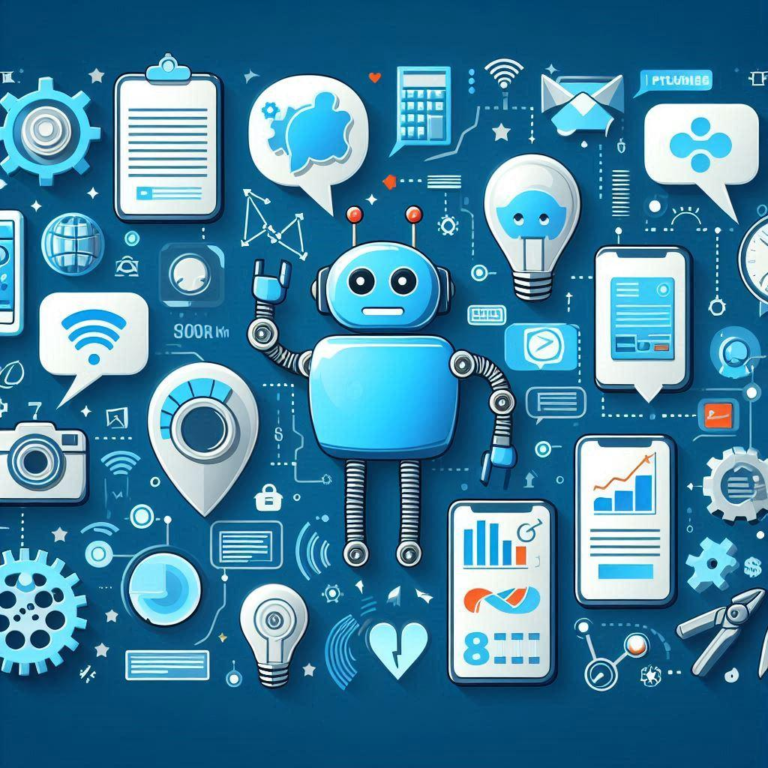Chatbots are becoming a big part of digital marketing, offering businesses a way to streamline customer interactions and improve engagement. But, despite all the excitement, setting up chatbots isn’t always as straightforward as it seems. From grasping the technology to ensuring it meets customer needs, there are quite a few hurdles companies need to overcome. Let’s dive into some of these challenges and how to tackle them.
How Do AI-Powered Tools Revolutionize Digital Marketing?
AI-powered tools are truly changing the game in digital marketing, and chatbots are at the forefront of this revolution. These smart assistants can engage with customers 24/7, answering questions, providing recommendations, and even handling transactions—all without needing a coffee break! By using chatbots, businesses can not only boost customer satisfaction but also gather valuable data on user preferences and behavior. This means they can tailor their marketing strategies more effectively, making every interaction feel personal. As a result, companies can connect with their audience in ways that were never possible before, ultimately driving sales and loyalty.
What role do AI-driven technologies play in marketing strategies?
AI-driven technologies play a crucial role in shaping modern marketing strategies, and one great example is the WhatsApp chatbot. These chatbots help businesses communicate with customers on a platform they already use daily. By automating responses and providing instant support, companies can enhance their customer service without the extra workload on their teams. Plus, they can engage users in personalized conversations, making marketing feel more genuine and tailored. This approach not only keeps customers happy but also drives conversions, as people appreciate quick and helpful interactions when they’re making purchasing decisions.
How does artificial intelligence enhance customer engagement in campaigns?
Artificial intelligence significantly boosts customer engagement in digital marketing campaigns by providing smarter, more personalized experiences. AI tools analyze customer data to understand preferences and behaviors, allowing brands to connect with their audience in meaningful ways. Here are a few ways AI enhances engagement:
● Personalized Content: AI can tailor content recommendations based on user interests, making interactions feel more relevant.
● Real-Time Support: With chatbots available 24/7, customers get immediate answers to their questions, keeping them engaged and satisfied.
● Predictive Analytics: AI predicts customer needs, enabling brands to reach out with offers or information just when it’s most needed.
● Behavior Tracking: By analyzing how customers interact with campaigns, businesses can adjust their strategies to improve engagement rates.
What Are the Key Obstacles to Digital Marketing Automation?
While digital marketing automation offers fantastic benefits, there are some key obstacles that businesses often face. One major challenge is the integration of AI-powered chatbots into existing systems. Companies may struggle with setting up these chatbots effectively, ensuring they communicate seamlessly with other tools and platforms. Additionally, there can be a learning curve for teams unfamiliar with using automation technology, which can lead to frustration and slow adoption. It’s also crucial to maintain a personal touch in automated interactions; if customers feel like they’re talking to a machine instead of a real person, it can hurt engagement. Overcoming these hurdles requires a solid strategy and a willingness to adapt as technology evolves.
Why do some businesses struggle with automating their marketing efforts?
Many businesses struggle with automating their marketing efforts for several reasons. One common challenge is the lack of understanding of how AI-powered chatbots work and how to implement them effectively. Without a clear strategy, companies can end up with chatbots that don’t meet their needs or fail to engage customers properly. Additionally, some teams may resist adopting new technologies, fearing it will replace their roles rather than enhance their work. There’s also the issue of data quality; if businesses don’t have accurate and organized data, automation tools can’t deliver the right messages to the right people. Overall, it takes time, training, and a willingness to embrace change to make automation successful.
How can brands overcome common issues in digital automation tools?
Brands can overcome common issues in digital automation tools by taking a few strategic steps. First, investing time in training staff on how to use these tools effectively is essential, especially when it comes to customer engagement tools. When the team feels confident in using these technologies, they can maximize their potential and create more meaningful interactions.
Second, regularly reviewing and cleaning data is crucial to ensure that digital marketing automation works smoothly. High-quality data helps brands send the right messages to the right audience, making campaigns more successful.
Finally, it’s important to stay flexible and open to feedback. Brands should be willing to tweak their strategies based on customer responses and engagement levels. By continuously improving and adapting, companies can make the most of their digital automation tools and enhance their marketing efforts.
In conclusion, while implementing AI-powered tools like chatbots and embracing digital marketing automation can come with challenges, the benefits are well worth the effort. By focusing on proper training, maintaining high-quality data, and being adaptable, brands can create engaging experiences for their customers. Ultimately, overcoming these obstacles will help businesses connect more effectively with their audience and drive better results in their marketing efforts. So, it’s time to embrace the change and unlock the full potential of these innovative technologies!

